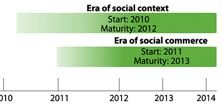How to Defeat the Revolutionaries
Posted by Chris Kieff on May 15th, 2009
Operating a social site becomes a challenge when you make what appears to you to be a small change to the system and the users revolt. This is being experienced by the operators of Twitter, the exploding social microblogging site. Twitter made a small change to the way their system works without announcing the change, or apparently consulting the users beforehand. You may recall that Facebook has seen a series of these user revolts recently over their change in the layout, and changes in their terms of use.
So what is a concerned community manger to do when they want to change something?
Talk with your users-Duh!
So what is a concerned community manger to do when they want to change something? Talk with your users. Identify your most vociferous, super-users and invite them into a VIP Group. Discuss changes you’re considering with this group. Seek their feedback, and see what they find interesting, frustrating, useful and useless. If you happen to be running your community on the Ripple6 platform, you can use our consumer research tool Social Insights to help you create this group and monitor it. (Marketers use Social Insights to conduct consumer research too.)
You may also want to create a second group of newbies who are not experienced with the site, who can look at it with fresh eyes. The newbies will see the that your super users have grown immune to over time. Taking input from both groups and giving them a little advanced notice on upcoming changes will defuse the Revolution before it begins.
But the bottom line here is that you should be communicating with your community. Don’t fall into the trap of thinking like old media and declaring that you know what’s best for your audience. Because it’s not an audience any more. “Audience” comes from audio and it means to listen. Community is related to commune which means to meet. You work with a community, not an audience as long as you keep that in mind you’ll do fine.
Photo credit Flickr Uploaded on February 26, 2006 by weaponofchoice



 In the chart at right you can see that Forrester is predicting the Era of Social Commerce will begin in 2011 and reach maturity in 2013. Ripple6 believes that this assessment misses the mark because Ripple6 is offering Social Commerce products today. So while it may take 1 or 2 years for the market to mature, we believe that the advantages of social commerce will be so dramatic that online businesses will need to adopt social commerce into their sites merely to stay competitive.
In the chart at right you can see that Forrester is predicting the Era of Social Commerce will begin in 2011 and reach maturity in 2013. Ripple6 believes that this assessment misses the mark because Ripple6 is offering Social Commerce products today. So while it may take 1 or 2 years for the market to mature, we believe that the advantages of social commerce will be so dramatic that online businesses will need to adopt social commerce into their sites merely to stay competitive.

